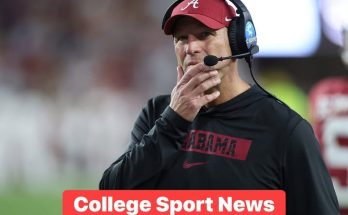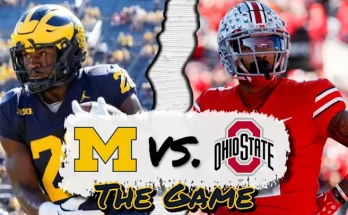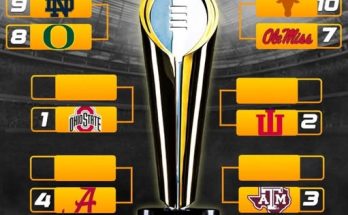In an unexpected and somewhat perplexing turn of events, Kentucky’s offensive line has once again been affected by the transfer portal. Following a season that saw ups and downs for both the program and individual players, one member of the Wildcats’ offensive line has made the decision to re-enter the transfer portal, leaving the coaching staff, teammates, and fans to try and understand what exactly led to this latest move.
This development isn’t the first time Kentucky has been impacted by the unpredictability of the transfer portal, nor is it the first time that the offensive line has been subject to such movement. But with a roster that’s seen significant turnover in recent seasons, this particular departure carries more weight than many might initially realize. With an already tumultuous 2025 offseason underway, this latest player decision has added another layer of intrigue and uncertainty to what is shaping up to be a critical year for Kentucky football.
In this article, we will take a comprehensive look at the circumstances surrounding the departure of the offensive lineman from Kentucky, how it impacts the Wildcats’ offensive line moving forward, and the broader implications of the ongoing transfer portal era in college football. We’ll explore the player’s background, their time at Kentucky, and why this decision comes at such a pivotal point in the program’s history.
Kentucky’s offensive line has been a major point of focus over the past few seasons. Known for producing powerful and physically dominant players who play a vital role in both the ground game and the protection of the quarterback, the Wildcats have always placed a strong emphasis on their offensive line. Historically, they’ve been known for their ability to recruit and develop linemen, with a handful of them going on to have successful careers in the NFL. With Kentucky head coach Mark Stoops continuing to establish the program as a competitive force in the Southeastern Conference, the stability and success of the offensive line has been a key part of their identity.
That’s why the decision of this player to leave the program—and in particular, to do so at such a crucial juncture in the offseason—is not only surprising but also troubling for the coaching staff. With many positions on the field already facing turnover and competition, Kentucky’s offensive line could be facing a period of instability, which might make it harder for the Wildcats to hit their stride in 2025.
The player who has decided to re-enter the transfer portal was considered a key piece of the Wildcats’ offensive line puzzle in 2024. Although not a starter for the majority of the season, the offensive lineman was expected to contribute as a depth piece and possibly challenge for more prominent playing time moving into the 2025 season. A few factors could have played a role in their decision to leave, with playing time certainly being a major consideration. College football players frequently seek out programs where they believe they have the best opportunity to contribute, and if that opportunity seems limited at a particular school, it can drive players to seek out new options.
Additionally, the development of this player within the Kentucky program has been somewhat inconsistent. While they showed promise early on in their college career, their performance on the field may have been less than expected. As with many players who come into college with high expectations, the transition to the next level is not always seamless, and that can affect a player’s confidence and long-term prospects. In this player’s case, the lack of significant playing time in 2024, coupled with fierce competition for spots on the offensive line, likely played a part in their decision to pursue other options.
Another important factor to consider is the role of NIL (Name, Image, and Likeness) in college football decisions today. The NIL landscape has dramatically altered the college football world, especially in terms of player recruitment, retention, and movement. While it’s unclear whether NIL played a part in this particular transfer decision, it’s something worth discussing in the broader context of why players are entering and exiting the transfer portal at a higher rate than ever before. With opportunities to profit from their name, image, and likeness, players may feel more empowered to make decisions based on both their on-field and financial opportunities. This aspect of college football is still relatively new, but it has already shown its impact on player movement.
As Kentucky heads into 2025, they will need to contend with both the physical and emotional impact of this departure. Losing a player who was viewed as a potential contributor is never easy, especially when that player is an integral part of the offensive line. The Wildcats will now have to recalibrate their plans, potentially looking at new players to fill that spot or adjust their schemes and depth chart accordingly. For Kentucky to remain competitive in the SEC, where every matchup is challenging, the offensive line will need to be as cohesive and stable as possible.
With that in mind, it’s also important to look at Kentucky’s other options for the offensive line. While this loss is certainly a setback, the Wildcats do have other players in the pipeline who could step up and fill the void. The offensive line remains one of the most vital components of Kentucky’s overall strategy, so ensuring that the Wildcats have the necessary depth and talent will be crucial for the success of the 2025 season. Stoops and his coaching staff have consistently proven their ability to identify and develop talented linemen, and it’s likely they’ll continue to do so, even with this recent departure.
Of course, Kentucky isn’t the only team that has been affected by the transfer portal. In fact, the landscape of college football as a whole has been forever altered by the portal and the rapid pace at which players can switch programs. It’s something that has caught many programs off guard, as the stability that once came with player retention has been replaced with uncertainty. While Kentucky’s decision to recruit and develop offensive linemen remains a central tenet of their program, the realities of the modern college football landscape mean that they must also adjust to the volatility of player movement.
There’s no denying that the transfer portal has been a double-edged sword for many programs. On the one hand, it offers players a chance to find better opportunities, and it can be a tool for programs to reload with talent. On the other hand, it can leave teams scrambling to fill gaps, particularly when a critical position group, such as the offensive line, is impacted.
Looking ahead, Kentucky will likely have to focus on finding ways to stabilize their offensive line depth in the coming seasons. Whether through the recruiting of high school players, the potential for JUCO additions, or even looking to the transfer portal for immediate help, the Wildcats will need to explore every avenue to rebuild the depth that was once thought to be a strength. The loss of this particular offensive lineman may have caught everyone by surprise, but it should serve as a reminder of the unpredictable nature of college football in the current era.
As the Wildcats now navigate the fallout from this departure, they will need to focus on keeping their remaining offensive line members engaged, developing new talent, and continuing to recruit players who will strengthen that crucial part of their roster. If Kentucky can do this effectively, they could weather the storm and remain competitive in one of the toughest conferences in the country.
The era of the transfer portal is one that’s still evolving, and teams will continue to adapt to the realities that come with it. For Kentucky, this latest departure is just another chapter in the ongoing saga of college football roster building. It may be disappointing for fans and frustrating for coaches, but it’s also an opportunity for Kentucky to continue proving their resilience and ability to overcome adversity. The Wildcats’ offensive line may have lost one player, but with the right leadership and strategy, they can still stand strong and continue to build for the future.
In the end, it’s not just about replacing one player—it’s about finding a way to grow, adapt, and succeed in a college football world that’s changing faster than anyone could have predicted. The journey is far from over, and Kentucky’s football program has plenty of room to keep evolving and finding success, even in the face of unexpected challenges like this one. Only time will tell how this will impact their 2025 season, but if the Wildcats have proven anything in recent years, it’s that they are not a program to back down from a challenge.



